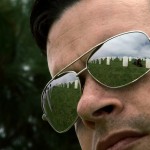Post-Production
Filmmaking - Post-Production
-
Michael Barry on His Career in Film Sound
Michael Barry has been a re-recording mixer for more than two decades, working on over 100 films. Some of the directors he has collaborated with include Tony Gilroy (Duplicity, Michael Clayton), Stephen Daldry (The Reader), David Koepp (Ghost Town, Secret Window), Robert Altman (Short Cuts, A Prairie Home Companion) and the Coen Brothers (The Big Lebowski, Fargo). In our interview he discusses his beginnings in sound, the job of the mixer, and the future of sound in film. Filmmaker: When did you become interested in sound and film? Barry: My mother studied piano at Juilliard. I grew up with her […]
-
Lightworks Revamp Just Around the Corner
Postproduction is in a state of flux. As is well known by now, Apple’s latest Final Cut Pro iteration left a lot to be desired for professional editors, and competitors Avid and Adobe were quick to step in and lure away Final Cut users. And now the newest competitor is also the oldest. Lightworks, one of the first viable nonlinear editing systems when it was first released in 1989, has been used by luminaries like Thelma Schoonmaker and has racked up a number of Oscars and other awards, including a technical Oscar and Emmy for the system itself. It couldn’t […]
-
Leitner’s Mondo NAB, Part 5: Roundup

Originally posted April 2011. This fifth and last NAB 2011 blog is really about churn. Churn, to my way of thinking, is the degree of agitation and upheaval in the industry at a given point in time, such as this NAB. Apple’s sneak peek of FCP X at the Final Cut Pro Users Group 10th anniversary SuperMeet reminded me that even a decade ago, indie filmmakers were still coming to grips with the desktop revolution. I remember producers transferring MiniDV cassettes of my footage to Betacam for digitizing back to Avid, oblivious to FireWire or FCP 1.0. How professional could […]
-
Leitner’s Mondo NAB, Part 2

Originally posted April 2011. I wish to continue my notes about developments in large-sensor cameras, but of course the magnesium-powder newsflash sucking up all the oxygen at NAB today is Apple’s stealth sneak peek at Final Cut Pro X last night. Apple hasn’t officially attended NAB for several years—many of us miss the consummate showmanship of their former press conferences—so when news broke on the eve of NAB that an entire slate of speakers at the 10th annual FCP User Group SuperMeet had been swept aside for a special guest, Apple fever took hold. The event sold out in a […]
-
Storaro Talks Shop
Originally published in our Web Exclusives section on June 8, 2007. It is entirely without hyperbole to introduce Vittorio Storaro as one of the most singular and influential cinematographers in the progression of modern motion pictures. His color palette on films such as The Conformist and Apocalypse Now is without peer, and long-lasting collaborations with directors Bernardo Bertolucci, Francis Ford Coppola and Warren Beatty have been recognized with three Oscars for Best Cinematography (Apocalypse Now (1979), Reds (1981) and The Last Emperor (1987)). Storaro’s latest film is Caravaggio, screening this week as part of Lincoln Center’s series “Open Roads: New […]
-
COLOR ENHANCEMENTS: A CLOSER LOOK AT DI

Originally published in our Fall 2010 issue, we look at why digital intermediate has become an essential tool for DPs. From the story: Aside from discussing the look of the film with the DI house early on for both aesthetic reasons and very practical ones like deciding what kind of camera to use, these meetings can also help a producer or director determine what their actual budget is going to be. A process house can walk everyone through all the different camera and workflow options and show them actual finished footage of what these options will look like. Thinking of […]
-
Editor Tariq Anwar on the Art of Postproduction
Thursday night EditShare sponsored a seminar with Oscar-nominated film editor Tariq Anwar at the Florence Gould Hall on East 59th Street in Manhattan. Despite rain the evening was well attended by writers, directors, and especially editors, and Anwar’s presentation — basically a low-key Q&A session moderated by Manhattan Edit Workshop’s Josh Apter — was fun and informative. Here are a few thoughts he shared. Anwar got into filmmaking somewhat accidentally, starting by driving a truck then getting work as an assistant director. After doing a great deal of yelling at crews, he decided “the cutting room was the most civilized […]
-
Walter Murch on FCPX: “Where is the ‘Pro’ Part of It?”
Here’s editor Walter Murch on his first encounter with Apple’s new Final Cut Pro X, his correspondence with Apple, and the Kremlinology of Cupertino. This was recorded at this past week’s Boston Supermeet. For a detailed report on his appearance, visit Chris Portal’s blog. (Hat tip: Notes on Video.)
-
Week Four at the Edit Center
Monday brings more scene analysis! We watch three scenes: one from Fearless, one from Punch Drunk Love, and one from Mulholland Drive; all of them are specifically chosen not just for picture, but also for sound. The scene from Punch Drunk Love is one I remember especially well. Adam Sandler’s character discovers a lone harmonium in the street. It sits in near silence. Sandler stares at it. The silence extends and then is abruptly broken as a truck zooms by – but we see the truck approach way before we hear it … which is jarring in an effective way, […]
-
Far From Afghanistan: U.S. Filmmakers Agitate on 10th Anniversary of the War

“Though I don’t have any children,” says John Gianvito, “I imagined a child someday saying to me, ‘You regard yourself as a political filmmaker, did you do anything during the longest war in U.S. history?’” Gianvito, the Boston-based director of the acclaimed feature The Mad Songs of Fernanda Hussein, recalls this thought coming to him earlier this year as the 10th anniversary of the U.S. war in Afghanistan approached. On Thursday, October 6, in honor of that day of infamy, Gianvito and a team of filmmakers will unveil an ambitious omnibus project to raise awareness about the enduring conflict. […]
